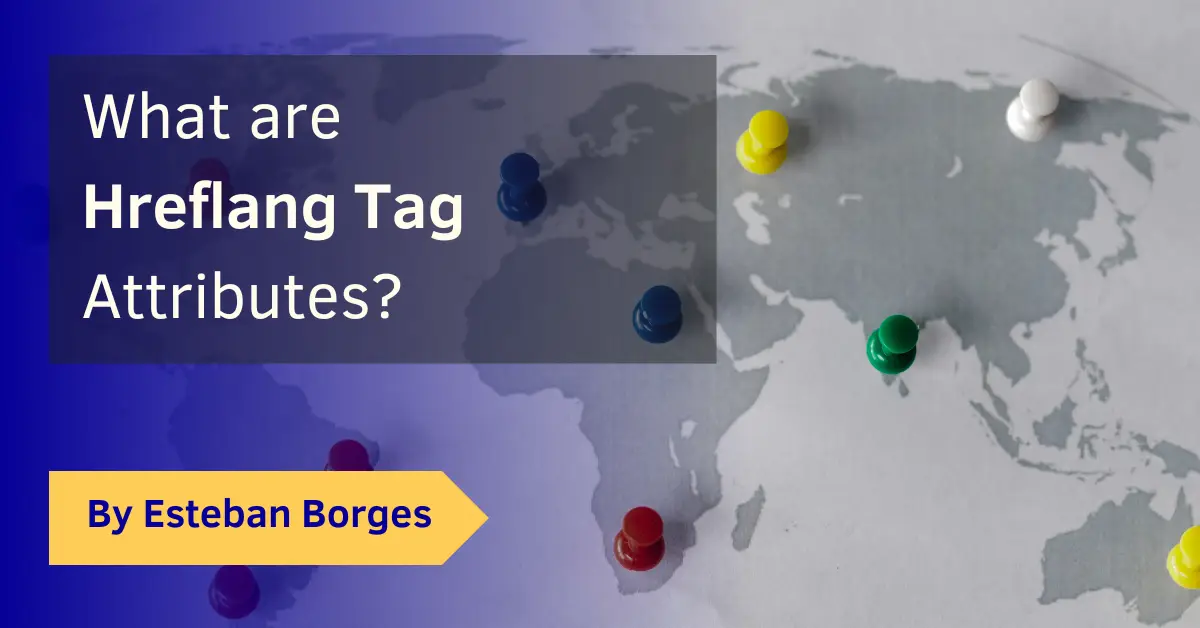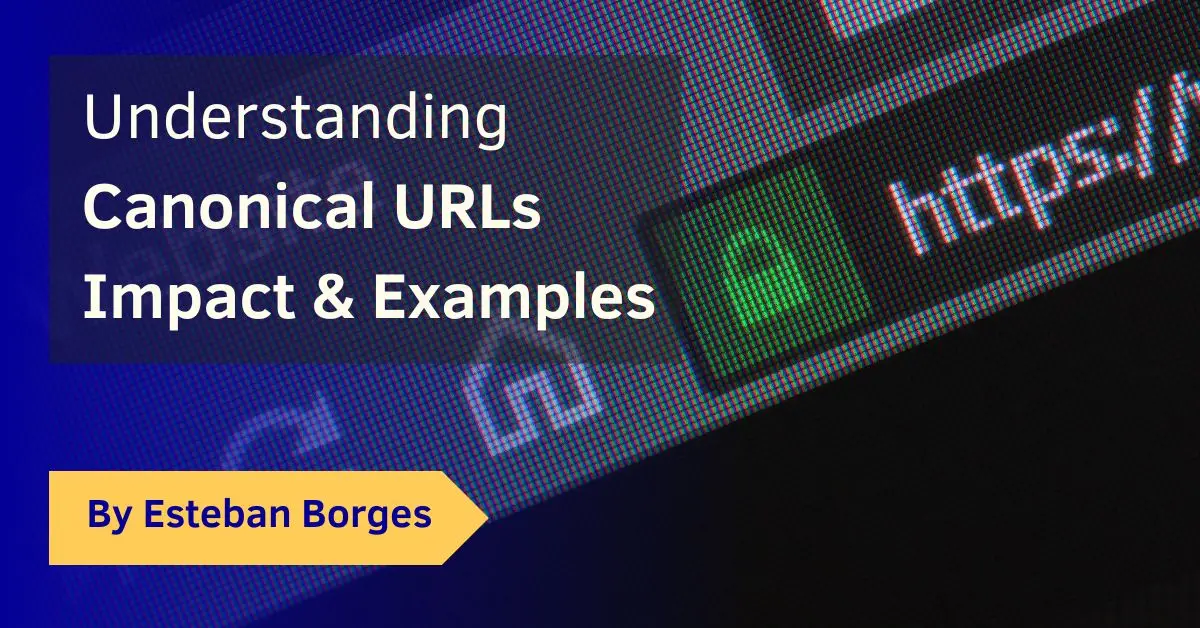What are Hreflang Tag Attributes? Implementation Guide
In the ever-changing landscape of online marketing, employing the right strategies can make or break your digital presence. One of these essential strategies is understanding and implementing the hreflang attribute, a vital component of technical SEO, and an integral part of your local Content Strategy.
Understanding what hreflang is, how it works, and how to use it effectively is a critical step in optimizing your website for a global audience. If done right, it can lead to substantial growth in international traffic and an overall improvement in the user experience. Conversely, if you do it wrong, it can negatively impact your traffic.
You may be surprised to learn that even big organizations often don’t know about hreflang or how to use it properly when generating country-specific pages. But how does one get started with hreflang, and what common problems might they encounter? Let’s find out.
Table of Contents
What is the Hreflang Attribute?
Hreflang is an HTML tag used to specify the language and geographical targeting of a webpage. It’s a signal to search engines like Google to show the correct language version of a page to a user searching in that language.
If your website has content in multiple languages, implementing hreflang is essential. It helps search engines understand the relationship between various language versions of the same content, thereby serving the most relevant version to the user.
What is Link Rel Alternate?
The “link rel alternate” tag is an essential companion to hreflang. It’s used to tell search engines that alternate localized versions of the content are available in different languages or for different devices.
Implementing Hreflang: A Comprehensive Guide
1. Identifying Your Target Audience:
Before diving into implementation, it’s vital to identify your target languages and regions. Utilizing tools like Google Analytics to understand your audience is a fundamental step in your Content Strategy.
2. Understanding Language and Country Codes:
Utilizing the right language and country codes is crucial. ISO 639-1 and ISO 3166-1 alpha-2 are the standard codes used for language and country, respectively. Failure to use these correctly could lead to misdirection of traffic.
3. Implementing the Hreflang Attribute:
Whether you add the hreflang attribute to the HTTP header, HTML head, or your XML sitemap, the implementation must be error-free. Tools like Google Search Console can assist with validation.
4. Monitoring and Continuous Improvement:
SEO is a continuous process. Regularly monitoring your hreflang implementation ensures it aligns with SEO best practices and your overall marketing goals.
Common Problems and How to Solve Them
1. Incorrect Language Codes:
Ensuring the use of correct language codes is pivotal. Using incorrect codes can lead to serving the wrong content to users. A meticulous review process should be part of your website redesign SEO checklist.
2. Missing Return Links:
Each page must reference itself and all other language versions. This bidirectional linking ensures coherence and enhances user experience.
3. Duplicate Content Issues:
Understanding the importance of meta title tags and the impact of canonical URLs for SEO is critical. Ensuring your canonical tags are correctly implemented will prevent duplicate content penalties.
4. Poor URL Structure:
Having a clear and consistent URL structure enhances usability and SEO. A properly designed URL structure that reflects the content’s language and region is essential.
Hreflang implementation – Real life Examples
Hreflang implementation plays a crucial role in serving the right content to the right audience. Here are some real-life examples to help illustrate how this can be done creatively and comprehensively:
1. Multilingual Website:
For websites that offer content in multiple languages, hreflang guide search engines to serve the correct language version.
Example HTML:
<link rel="alternate" hreflang="en" href="https://www.example.com/en/" /> <link rel="alternate" hreflang="fr" href="https://www.example.com/fr/" />This setup ensures that English-speaking users see the English version, while French-speaking users see the French version.
2. Regional Variations:
When targeting different regions that speak the same language, hreflang can differentiate between regional dialects or variations.
Example HTML:
<link rel="alternate" hreflang="en-GB" href="https://www.example.co.uk/" /> <link rel="alternate" hreflang="en-US" href="https://www.example.com/" />This directs users in the UK to the British English version and users in the US to the American English version.
3. E-Commerce Localization:
For e-commerce sites with localized pricing and shipping information, hreflang ensures that users see relevant details based on their location.
Example HTML:
<link rel="alternate" hreflang="es-MX" href="https://www.example.com/mx/" /> <link rel="alternate" hreflang="es-AR" href="https://www.example.com/ar/" />This provides a seamless shopping experience for customers in Mexico and Argentina by displaying prices and shipping information in the local context.
4. Fallback Options:
Including a fallback option helps in serving content when a specific language or regional variation is not available.
Example HTML:
<link rel="alternate" hreflang="x-default" href="https://www.example.com/" />This tag directs users to a default version if their language or region is not explicitly targeted.
5. Combining with Canonical Tags:
Hreflang attributes can be combined with canonical URLs to clarify the relationship between similar content in different languages or regions.
Example HTML:
<link rel="alternate" hreflang="de" href="https://www.example.com/de/" /> <link rel="canonical" href="https://www.example.com/de/" />This helps search engines understand that the German page is the canonical version for German-speaking users.
These real-life examples demonstrate the versatility and effectiveness of hreflang implementation in various scenarios. From managing multilingual content to providing region-specific experiences, hreflang variables are essential tools in the modern SEO toolkit.
Advanced Tips for Hreflang Implementation
1. Automation and Tools:
Using automated tools can significantly reduce the time and complexity of implementing hreflang. Tools like Yoast SEO for WordPress provide easy solutions.
2. Integration with Other SEO Strategies:
Hreflang is not a standalone strategy. It should be integrated with other essential SEO practices, such as understanding canonical URLs for SEO and employing effective meta title tags.
3. Ongoing Maintenance and Monitoring:
Like other aspects of SEO, hreflang requires ongoing maintenance and monitoring. Utilizing Google Search Console and other professional tools ensures that your hreflang strategy remains effective.
AI’s Impact on SEO and Hreflang
In the age of machine learning and artificial intelligence (AI), SEO is experiencing a transformation. AI is not only changing how SEO is done but also how it can be optimized, including proper hreflang tag implementation.
- Automated Hreflang Implementation with AI:
AI-powered tools like ChatGPT can generate hreflang code based on the content’s language and intended audience. This automation reduces human error and streamlines the implementation process.
- AI-Driven Content Personalization:
AI can analyze user behavior and preferences to serve the most relevant content, enhancing the effectiveness of hreflang. By understanding the user’s language and region, AI can tailor content, creating a more personalized experience.
- Monitoring and Analytics Through AI:
AI provides real-time monitoring and analytics, allowing for quicker adjustments and optimization of hreflang strategies. This continuous monitoring leads to better performance and enhanced SEO.
Using ChatGPT for Automated Hreflang Implementation
The cutting-edge AI technology of ChatGPT can be harnessed to create and manage hreflang tags efficiently. Here’s how it’s being done in real-life scenarios:
1. Automating Language Detection:
By using natural language processing (NLP), ChatGPT can automatically detect the language of a webpage’s content. This feature can be employed to generate appropriate hreflang tags for each page, ensuring that the correct language version is served to users. Here’s how:
Example Prompt:
Analyze the following text and suggest the appropriate hreflang tag: "Bienvenidos a nuestro sitio web.ChatGPT Response:
<link rel="alternate" hreflang="es" href="URL_OF_SPANISH_PAGE" />This automated feature ensures that the correct language version is served to users, streamlining the implementation process.
2. Creating Dynamic Hreflang Tags:
Through a series of custom prompts, ChatGPT can be instructed to generate dynamic hreflang tags based on the content’s structure, language, and target region. This automated process eliminates manual coding errors and streamlines the implementation.
Example Prompt:
Generate hreflang tags for a website with English and Spanish versions, targeting the US and Spain respectively.ChatGPT Response:
<link rel="alternate" hreflang="en-US" href="https://www.example.com/en/" /><link rel="alternate" hreflang="es-ES" href="https://www.example.com/es/" />3. Integration with SEO Platforms:
ChatGPT’s API can be integrated with popular SEO platforms, enabling automated hreflang implementation within existing SEO workflows. This approach enhances efficiency and ensures that hreflang tags are correctly aligned with the website’s overall content strategy.
4. Ongoing Optimization and Monitoring
With the ability to continuously analyze and optimize hreflang tags, ChatGPT offers a proactive solution. By monitoring site performance and user behavior, it can dynamically adjust hreflang tags, aligning them with the best practices in SEO.
These real-world applications demonstrate how ChatGPT is revolutionizing hreflang implementation. By leveraging AI’s power, businesses can make the often complex task of managing multilingual content more manageable and effective, further reinforcing their global SEO strategies.
Conclusion
Implementing hreflang for multilingual SEO is a nuanced and vital task that can lead to significant growth in global reach. By following this comprehensive guide, businesses can create a more inclusive and user-friendly experience for international audiences. With careful planning, adherence to best practices, and a robust understanding of common problems and solutions, the use of hreflang can become a powerful tool in your technical SEO toolkit.



